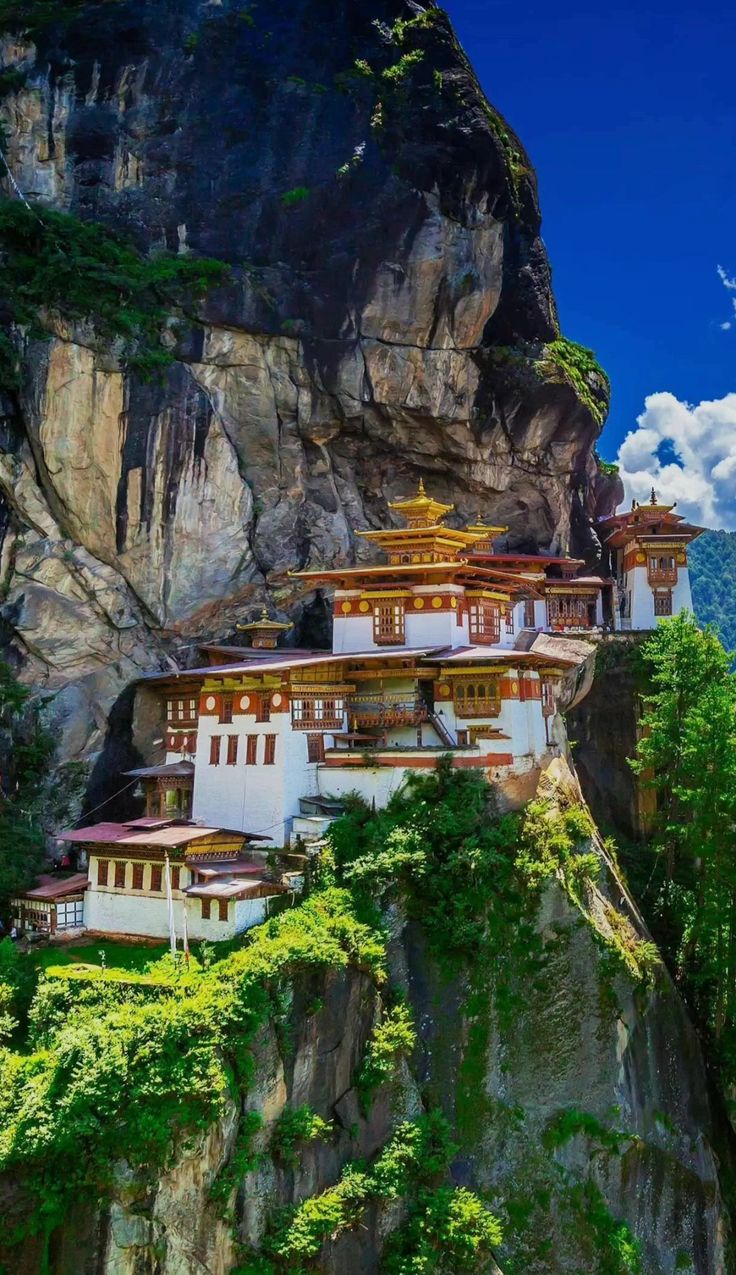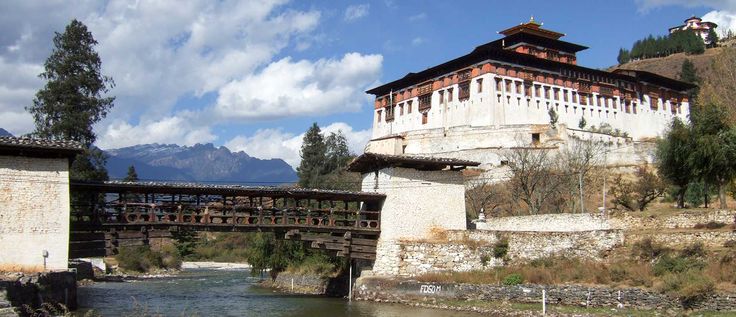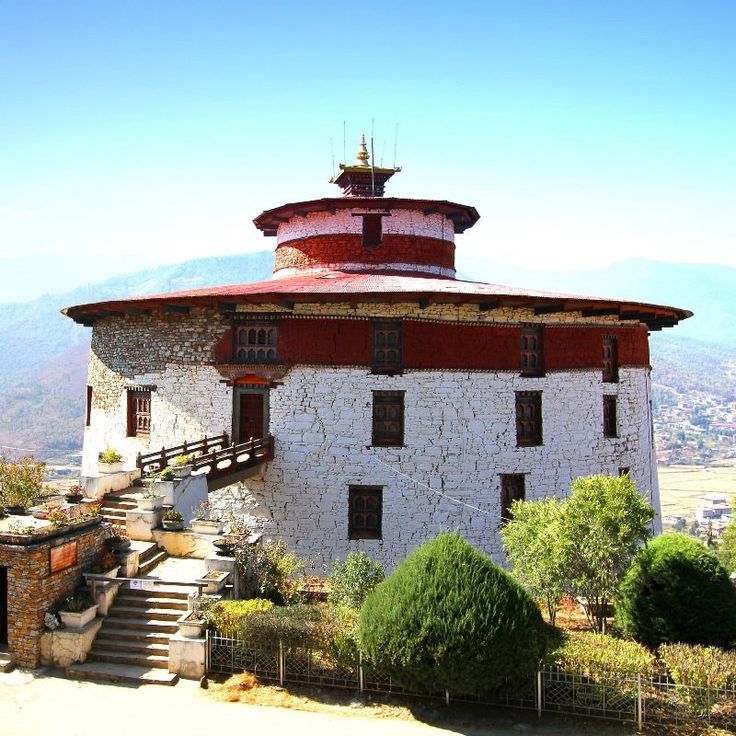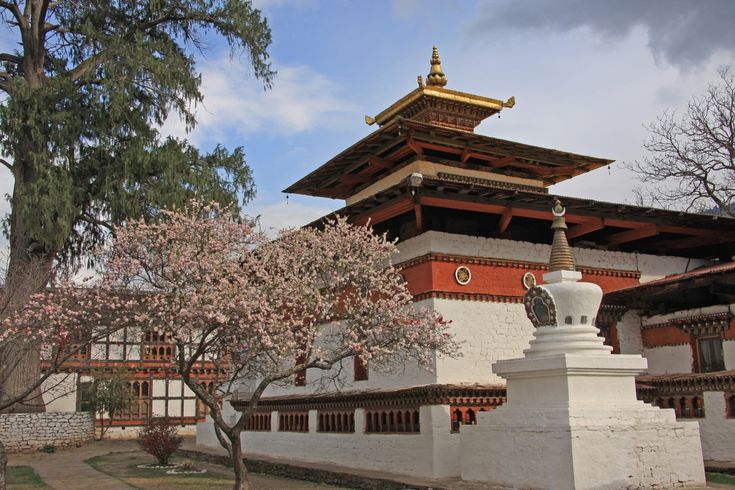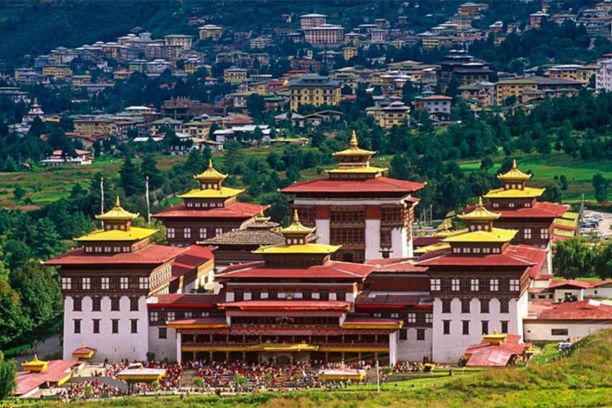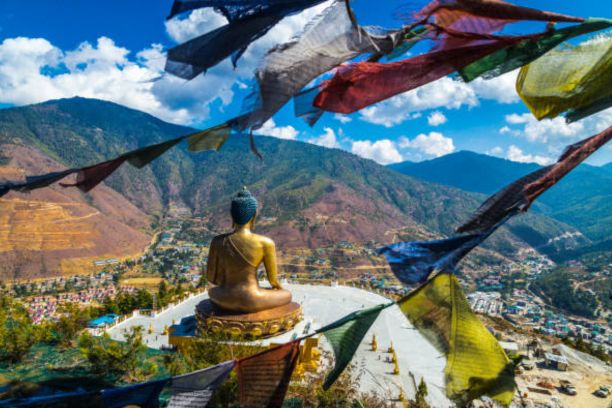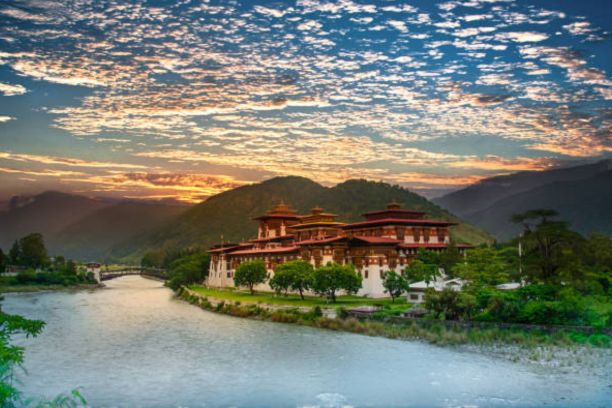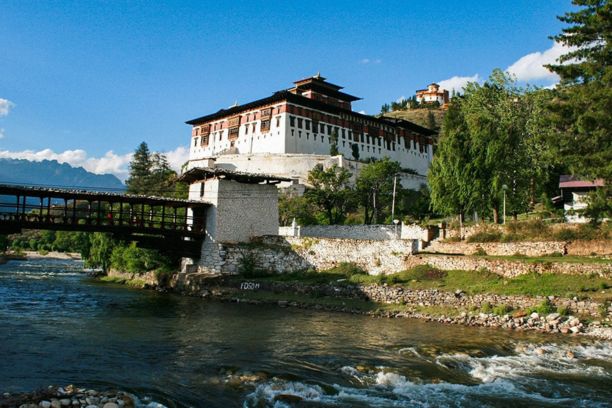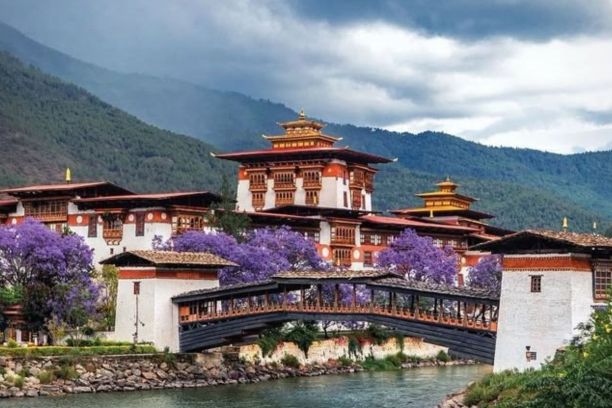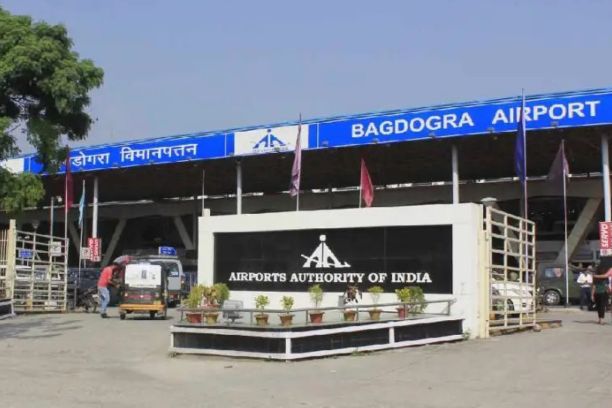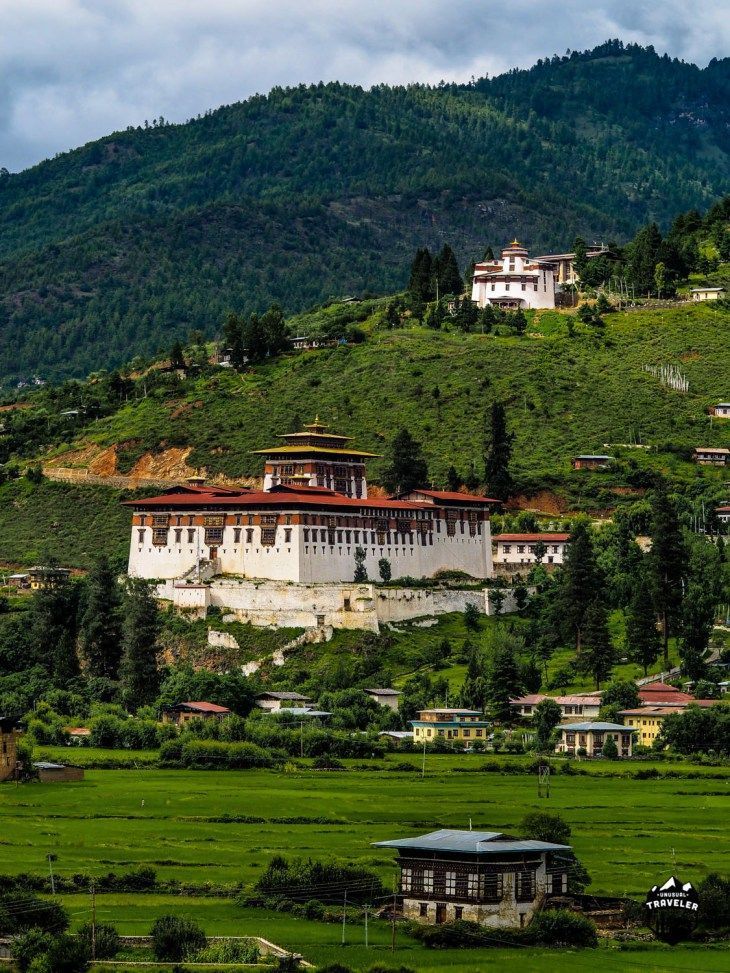
Picturesque Paro
Paro valley is perhaps the widest in the kingdom and is covered in fertile rice fields. The charming town itself lies on the banks of the Paro chu meandering down the picturesque region. The most visited monuments in Paro are the Tiger’s nest monastery (Taktsang), Rinpung dzong (Paro dzong), Drugyel dzong, Kichu monastery, Ta dzong (The national museum of Bhutan) and Kila goemba.
The valley extends from the confluence of the rivers at Chuzom right up to Mt. Jomolhari at the Tibetan border in the north. But what accentuate the beauty of the region are the many traditional style houses that dot the valley. The surrounding hills make Paro one of the best Bhutanese towns to explore on foot.
And because Bhutan’s international airport is located here, it is the only port of arrival and departure by air for international tourists. So, the valley is adorned by luxurious and boutique hotels and resorts to suit every budget. Paro is certainly one of the most recommended places to visit in Bhutan.
